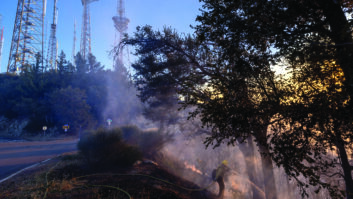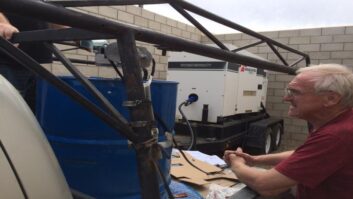Radio World’s “Guest Commentaries” section provides a platform for industry thought leaders and other readers to share their perspective on radio news, technological trends and more. If you’d like to contribute a commentary, or reply to an already published piece, send a submission to [email protected].
The author is CEO of the National Federation of Community Broadcasters. NFCB commentaries are featured regularly at www.radioworld.com.
As recent images from the Webb telescope morph our perceptions of the vastness of the cosmos, extreme weather events here on planet Earth are also morphing local radio’s role in the life of communities that are increasingly ravaged by floods, storms, earthquakes and massive fires. Ali Lightfoot, general manager of KVMR in Nevada City, put it this way during my recent visit to the station: “There is more to community radio than music. There is a lot more that you are doing in terms of serving the community in times of trouble that you cannot neglect,” she said. “It’s about finding a balance between keeping people informed and helping them through a bunch of really difficult transitions.”
On a regular day we like to think that people depend on us, but in the midst of a terrifying weather event like wildfire, local broadcasters understand more deeply just how much their community needs them. Power outages and evacuation orders are only the beginning of a domino effect of issues that place pressure on small local stations in remote rural areas, where so many community radio stations are.
In Nevada City this reality has led to a lot of restructuring. KVMR focused on building collaboration with local county officials. They trained 200 people in emergency broadcast procedures, provided top of the hour coverage around the clock and created a team of phone volunteers to field a plethora of questions from the distressed public. In this way, they became instrumental in completing a circle between the community and the agencies that serve them. Mind you that this went on in the midst of staff being evacuated from their homes and one staffer losing their home to fire.
In the last wildfire event, Lightfoot learned that she was being evacuated from her home while she was on the air reporting. Sprinkle in a global pandemic and you begin to see the outsized demands being placed on local stations who run with a small staff and legions of volunteers.

[Read More Guest Commentaries Here]
There are ongoing concerns even when the fires aren’t blazing. For KVMR, increased fire insurance rates plus more demand for people who can wire backup generators into the system present challenges. In the quieter months without fires the station has developed remote broadcasting kits, put evacuation plans in place, fleshed out a plan to better mobilize volunteers and generally beef up back up plans for the backup plan. Fire season used to start in September at the base of the Sierras where Nevada City is nestled, but now there is no real beginning or end to it so this kind of emergency preparedness is ever present and year-round. As Lightfoot noted, “Most of the time you are just trying to do the best you can.”
The time when emergency response was four beeps from a box, randomly scheduled to make sure a mechanism was in place when it might be needed, is a thing of the past. Larger global weather patterns affect local broadcasters on a daily basis in their technical operation, reporting capacity, budget needs and their immediate physical well-being and safety.
It’s a daunting reality to absorb, yet it is also an unprecedented opportunity to show up in new ways to serve communities that rely on the signal flow to keep them safe, connect them with resources and deliver comfort in times of trouble. There is a whole new world of galaxies that the Webb telescope is showing us at this moment in time and there is a whole new world of service that local broadcasters are revealing in their quest to be a beneficial presence in the places they call home.







